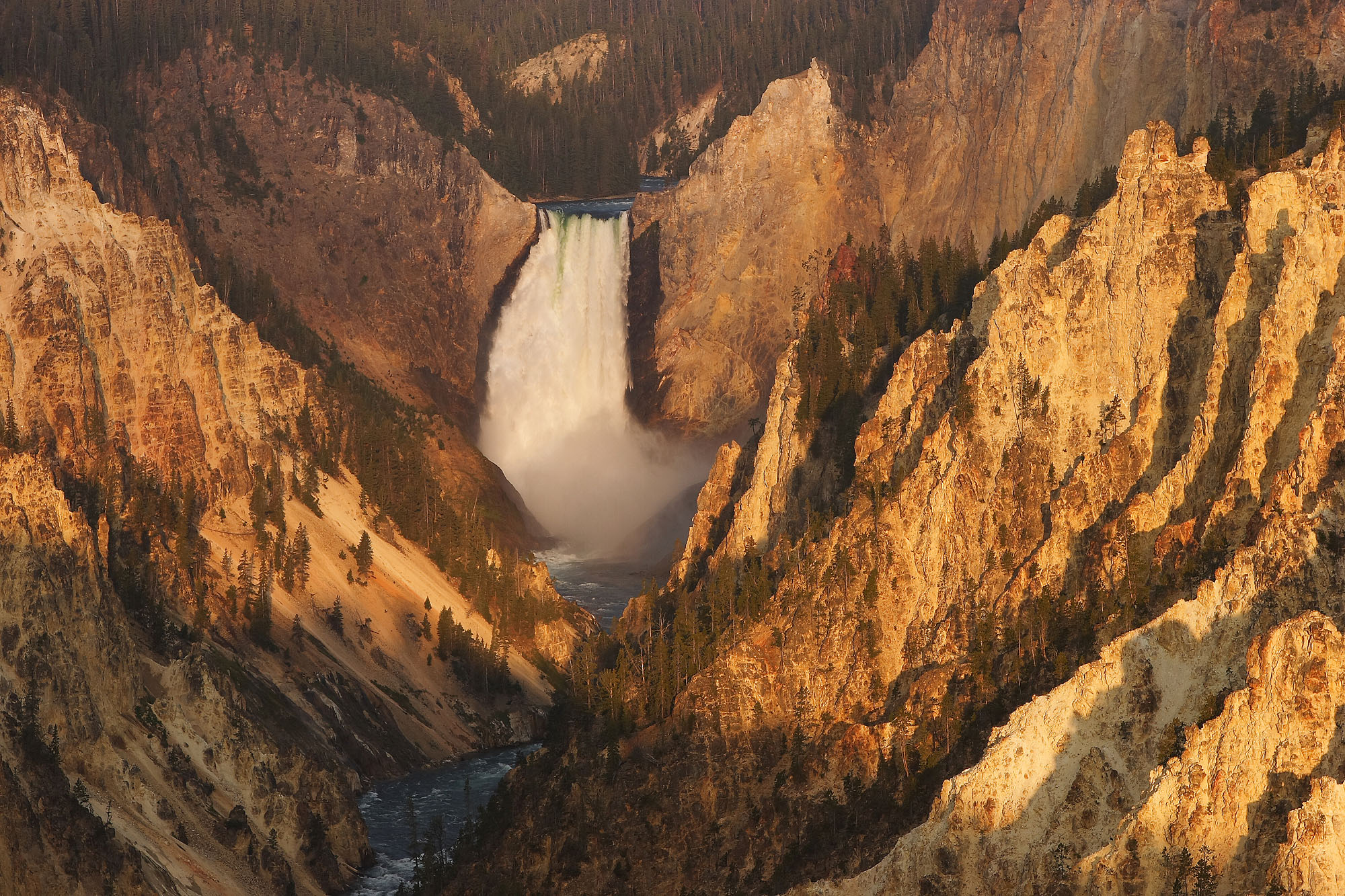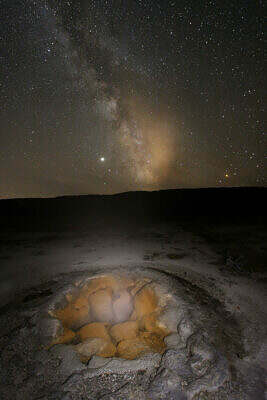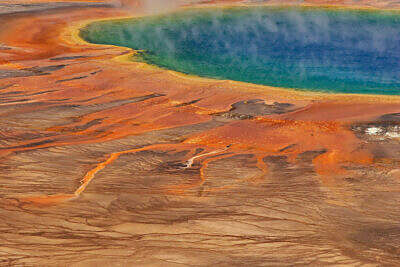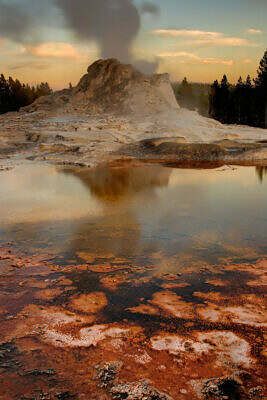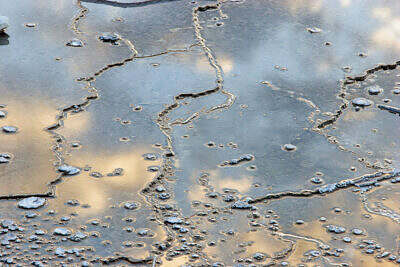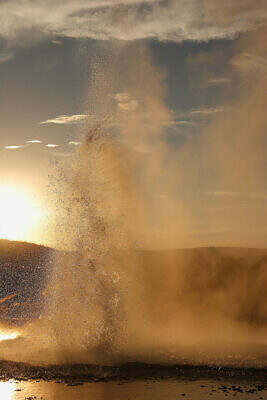At Artist Point, the Grand Canyon of the Yellowstone shows its spectacular natural painting of pastel-colored canyon walls and the impressive Lower Fall waterfall.
The evening sun casts an enchanting light on the pastel-colored volcanic rocks of the Grand Canyon of the Yellowstone and Lower Fall.
-
The formation of the Grand Canyon of the Yellowstone
Cut into Time
- Exhale into Space
- Coming to Life
- Aftermath of Creation
- Quicksilver
- Spinning through Bright Lights

